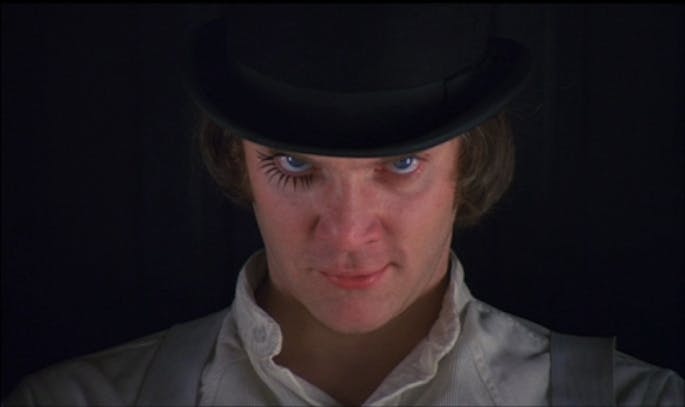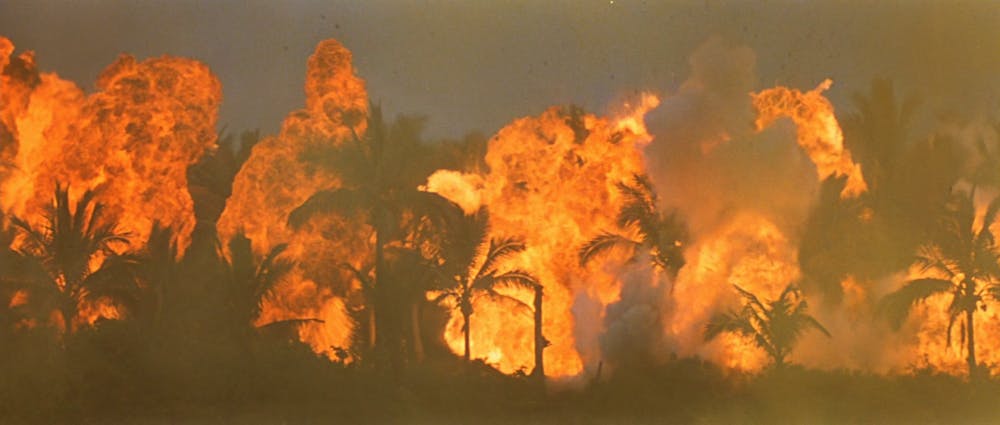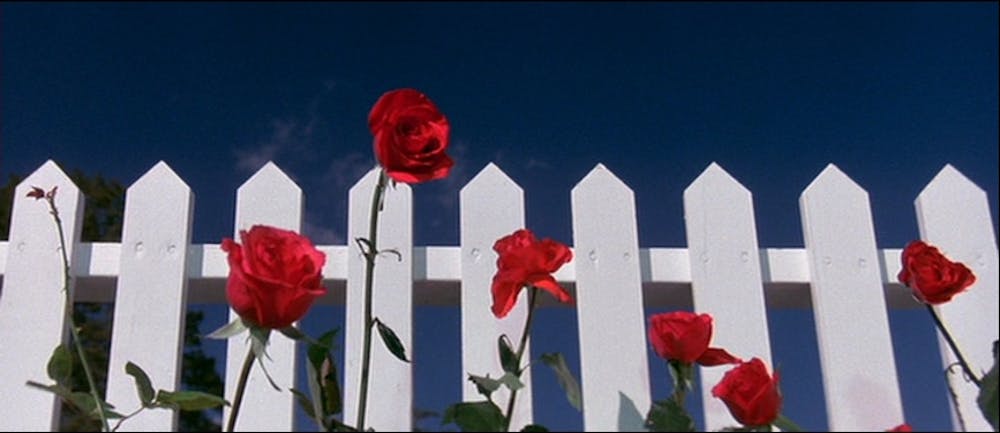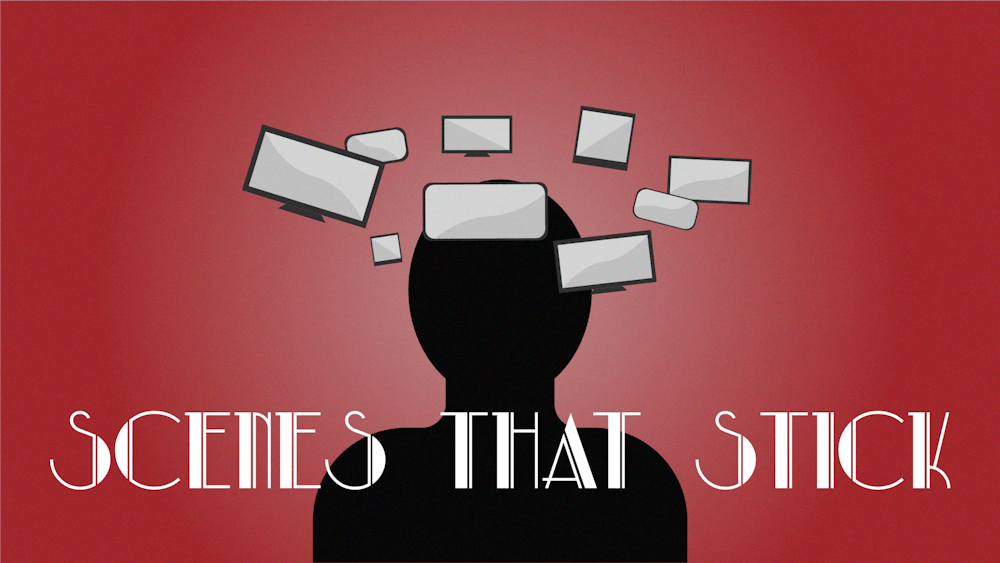Creating the opening scene for a film can be a challenging endeavor.
The beginning of a movie needs to get audiences interested, but it also needs to set up a platform to build the rest of the film. It’s vital to develop some combination of the film’s tone, world or characters within its first few minutes.
While there are so many iconic beginning scenes, The Eagle looked back through the history of film and narrowed it down to the best of the best. So, even though the semester may be ending, here are three of the best beginnings…
“A Clockwork Orange” (1971) - The Korova Milkbar

For a film as deeply rooted in malevolence as “A Clockwork Orange,” the beginning needs to concoct a real sense of evil to unnerve the audience and serve as a warning for what is to come.
The film delivers on this front entirely.
With the sinister fourth-wall-breaking stare of protagonist Alex DeLarge (Malcolm McDowell, pictured above) and the oppressive vibrations of Wendy Carlos’ electronic theme, “A Clockwork Orange’s” opening scene is a brooding masterclass of mise-en-scène from director Stanley Kubrick.
Fully embodying the now trademarked and iconic “Kubrick Stare,” Alex continues his menacing gaze into the camera as it pulls away – revealing the scene’s locale.
All the while, Wendy Carlos’s electronic arrangement of “Music for the Funeral of Queen Mary” continues to pound over the speakers. No context, dialogue, plot points or themes, yet “A Clockwork Orange” has already created such a fierce intensity as the audience drowns in both Alex’s eyes and the formidable “Theme From ‘A Clockwork Orange.’”
As the camera pulls farther back, Alex’s narration explains the characters and setting we have now been introduced to: “There was me, that is Alex, and my three droogs, that is Pete, Georgie and Dim… we sat in the Korova milkbar.”
Alex’s “droogs” are some strange combination of friends and followers of Alex. They are placed on either side of him, all four of them with glasses of milk in their hands. Alex’s legs rest on what appears to be a nude plastic figure of a woman.
The camera further retreats to reveal more of these figures spread across the “Korova milkbar” and more people. Audiences are met with a scene akin to the dramatic beauty of a Renaissance painting, a feast for the eyes that Kubrick has meticulously crafted.
We’re not entirely sure what this bar is or who these people are, but the foreboding atmosphere still immerses us in this film’s dystopian world – we are now ready for “A Clockwork Orange.”
“A Clockwork Orange” is available to stream on Tubi.
“Apocalypse Now” (1979) - “The End”

“This is the end, beautiful friend / This is the end, my only friend.”
These words, the opening lyrics to “The End” (1967) by The Doors, are how Francis Ford Coppola’s Vietnam War film “Apocalypse Now” begins.
After 10 seconds of darkness, an image of Vietnamese coconut trees fades into view. The mesmerizing whirring of helicopter blades loudens before one flies in front of the trees. A yellow smoke drifts up from the bottom of the frame while The Doors’ guitar begins to strum. The smoke intensifies, creating a dreamlike veil before our eyes.
Then, from the left side of the screen, we see an explosion begin – soon taking over the rest of this jungle (pictured above). Hauntingly beautiful orange flames engulf the screen as Jim Morrison’s lyrics enter the soundscape.
The camera tracks right and follows this explosion before the screen half-fades to the upside-down face of a man we will later know to be Captain Benjamin Willard (Martin Sheen), the protagonist of “Apocalypse Now.”
Only one hundred seconds into the film, director Francis Ford Coppola creates a sense of ambiguity; we are unaware of what is happening or where this film is going, but we are hypnotized. As Willard’s face fades onto the left half of the screen – and a narrative threatens to form – Coppola sends us on a psychedelic journey into Willard’s fractured psyche.
We see mirages of a ceiling fan, trees, statues and intensely orange flames. Morrison continues over the speakers: “Can you picture what will be? / So limitless and free / Desperately in need of some stranger’s hand / In a desperate land.”
Through this cluster of images – may they be dreams, visions or nightmares – we traverse to our first established locale of the film: Willard’s room in a hotel in Saigon.
Documents, bottles of liquor, lighters, a gun and a picture of a woman are all scattered across the room. The ceiling fan mimics the helicopter sounds while The Doors slowly fade away.
“Saigon,” declares Willard. “Every time I think I’m gonna wake up back in the jungle.”
What transpires over the final minutes of this prolonged opening is a wild and drunken display of Willard’s mental state, while Jim Morrison’s ramblings later on in “The End” return: “F**k me baby, f**k yeah / F**k, f**k, f**k, f**k, yeah! / F**k, yeah! C’mon baby.”
Seemingly trapped within these four walls, a wasted Willard breaks into a performance of some martial arts before striking his mirror and shattering his hand open – a stunt that actor Martin Sheen, who was drunk at the time, improvised, actually cutting his hand open.
Willard rolls off of his bed, blood spewing from himself and collapses in a wailing state of hysteria as he chugs from his bottle of liquor. Quite the introduction to our protagonist and film, “Apocalypse Now” is now ready to take us into the heart of the Vietnamese jungle plagued by war.
“Apocalypse Now” is available to stream on Amazon Prime.
“Blue Velvet” (1986) - Lumberton Montage

Set in the picturesque suburban town of Lumberton, North Carolina, “Blue Velvet” opens with a montage of the town.
While Bobby Vinton’s “Blue Velvet” swoons over the speakers, the viewer sees red roses against the backdrop of a perfect sunny day (pictured above) before dissolving into the following snapshots of Lumberton: a fireman welcoming the audience to this town with a wave, perfectly kept yellow tulips and school children crossing the street on their way home.
The shots slowly fade into one another while the subjects of the shots move in (almost) slow motion. It creates a surreal atmosphere, balancing comfort and unease.
Lumberton feels dreamlike but with something nightmarish lurking beneath it - this juxtaposition of moods will be vital to the rest of the film.
“Blue Velvet” then takes us to a man watering the house’s garden, and two women in the house watching a crime show. Returning to the man watering the garden, we see the first problem in this dream world: a kink in his hose. As the man pulls on the hose he suddenly collapses.
The man lies still on the ground while the hose spurts water out. A dog then runs across to him and tries to drink this gushing water. We see a slow-motion close-up of this dog and the water before cutting to the grass the man was watering.
The camera slowly sinks into the grass, into the mud and into a swarm of beetles. These beetles fill the screen and scramble around madly. It’s a distressing moment, a confusing one too, but it soon ends, concluding “Blue Velvet’s” beginning.
Around two and a half minutes in length, “Blue Velvet’s” opening scene is a classic David Lynch moment: prioritizing atmosphere and mood over context and exposition.
Although this imagery and these people are a mystery to a first-time viewer, for now, this is all we have: a scene that we are forced to feel rather than contemplate or analyze. The effect is magnificent; Lynch managed to submerge us into a world we cannot yet understand but one we now have feelings, images and sounds associated with.
“Blue Velvet” is available to stream on Tubi.
Though all going for something a little different, all three of these films capture the magic of movies within a mere few moments – and the rest of the films only get better and better.
This article was edited by Bailey Hobbs, Sara Winick and Abigail Turner. Copy editing by Luna Jinks and Charlie Mennuti.





